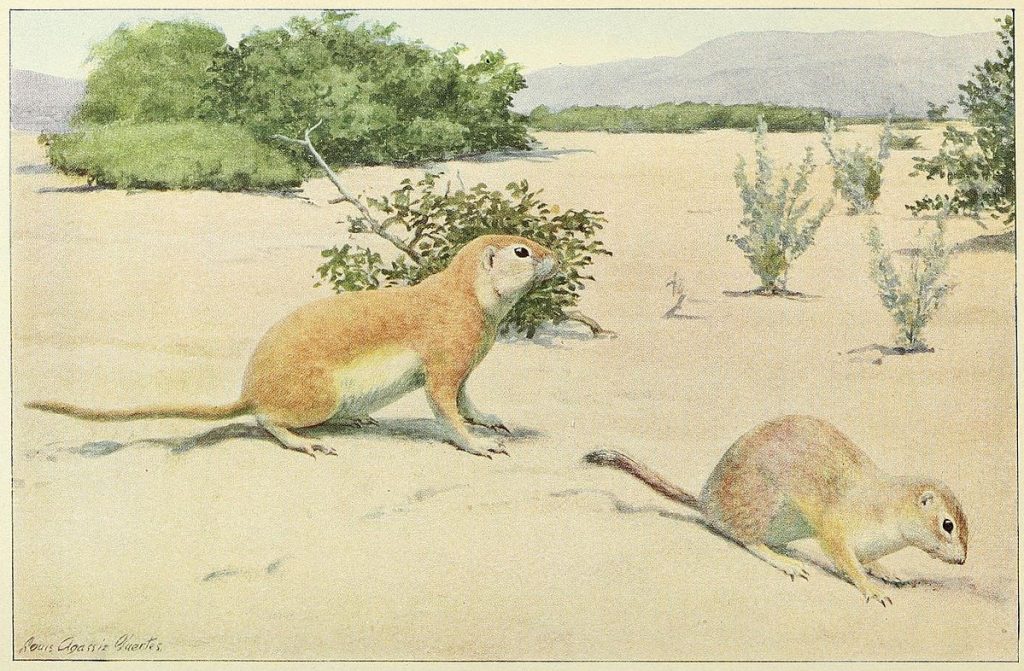
Louis Agassiz Fuertes (Source: Natural History of the Ground Squirrels, Grinnell and Dixon 1918)
STATUS
State status: Threatened
POPULATION TREND
(=) Stable
RESTORATION
Intermediate
FAMILY
Sciuridae, together with chipmunks, flying squirrels, and marmots
RANGE
Western Mojave Desert
Appearance
A brownish-grey ground squirrel with a white belly and distinct white eye rings. It grows up to 20 centimeters long and has a smaller tail and more uniform coat than other ground squirrel species in Los Angeles.
Habitat
The Mohave ground squirrel occurs in Joshua tree woodlands, creosote scrub, saltbush scrub, and Mohave mixed woody scrub between 500-1500 meters in elevation. They live and nest in burrows about 1 meter deep. They are very elusive mammals and also hibernate from July to February due to the lack of seeds, fruits, and green leaves available during the dry season.
Threats
The Mohave ground squirrel has a limited range and is vulnerable to habitat loss and fragmentation. Much of the Mohave Desert, including the western region where the ground squirrel resides, is under pressure from human development, with an expanding transportation infrastructure and the growth of solar energy in this region.
Conservation
The protection of ground squirrel habitat is an important part of conservation efforts. Public and private lands in the Mohave Desert needs to be carefully managed in order to protect population levels of this threatened mammal.
Where can you spot it?
The Mohave ground squirrel can be seen in the northern section of Red Rock Canyon State Park.